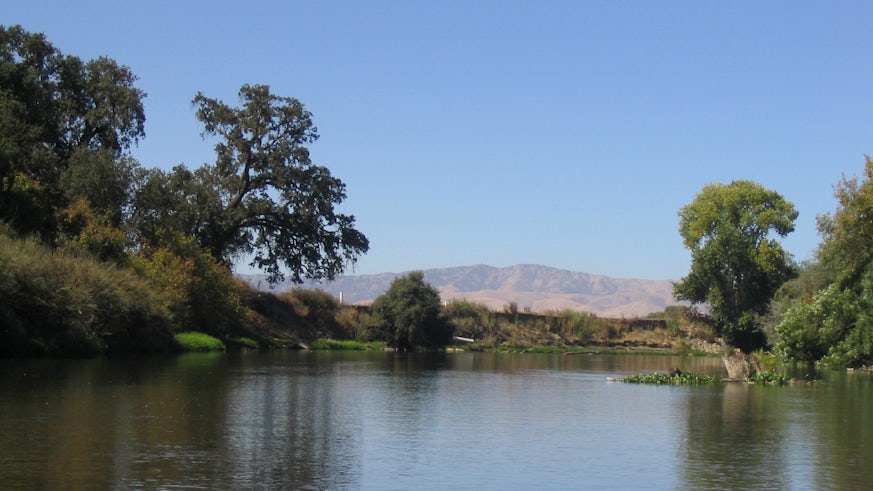‘Live fast, die young’ cycle threatening California’s ecosystems
15 June 2021

An entire ecosystem of rare and endangered species along the streams and rivers of California is being threatened by the water management across the state, scientists have warned.
In a new study published today, a team including researchers from Cardiff University has revealed the widespread and long-lasting damage that humans are inflicting by diverting water for their own needs.
The team found that the Californian ecosystems are being affected by “subsidies of water” delivered via human regulation of rivers, agricultural canals and discharges from wastewater treatment plants.
Whilst this huge influx of water was shown to provide a short-term boon to these ecosystems, the artificial supply creates an unintended dependence on its bounty, creating a “live fast, die young” cycle that is threatening the long-term survival of riparian forest ecosystems.
This in turn has repercussions related to habitat for endangered species, biodiversity, carbon sequestration and climate change.
California is one of the most biodiverse regions in the world, containing more species than the rest of the United States and Canada combined.
Many of the most-altered stream ecosystems are in California’s Central Valley, the state’s agricultural hub, which produces a third of the produce for the United States.
Since the Gold Rush in the 1850s, the massive human settlement that followed led to the clearing of 95 percent of the natural floodplain woodlands across the region. These isolated and restricted riparian — or streamside — forests now provide an important habitat for a wide variety of threatened and endangered species.
“As water is rerouted from rivers into canals to accommodate urbanization and the multibillion-dollar agricultural industry, it creates an artificially stable environment for riparian woodland ecosystems,” said co-author of the study Dr Michael Singer, from Cardiff University’s School of Earth and Environmental Sciences.
“This produces a live fast, die young phenomenon favouring fast-growing trees that peak and then decline within a few decades.”
In their study, published in Proceedings of the National Academy of Sciences, the team analysed five years of vegetation greenness data from publicly available satellite imagery, including Google Earth.
The team’s innovative and ground-breaking approach, combining several big datasets, allowed them to understand how climate and water management interact to put these sensitive ecosystems at risk in a way that has never been done before.
In California’s seasonally dry Mediterranean climate, plants and animals rely on rainfall and soil moisture recharge during the rainy winter and spring seasons for reproduction and growth during the typically dry summers. Once soil moisture is exhausted, tree species such as such as willows, cottonwoods and oaks typically use groundwater from deeper depths.
To the team’s surprise, the study showed that the streamside woodlands in the most arid regions of the state, which had been altered by humans, stayed greener longer into the dry season and were less responsive to changes in groundwater levels than natural ecosystems.
Similarly, the team showed that the regeneration of new forests were being compromised by the extensive alterations to streamflow and to river channels, which are fixed in place and no longer create new floodplain areas where young trees can establish.
“We call these forests the ‘living dead’ because the forest floor is devoid of saplings and younger trees that can replace the mature trees when they die,” said lead-author of the study Melissa Rhode, from State University of New York College of Environmental Science and Forestry (ESF) and scientist with The Nature Conservancy of California.
“Our methods and findings open up a whole new world of interdisciplinary research possibilities and ways that water practitioners can consider ecosystem water needs to achieve sustainable water management.”
The study is part of a $2.5 million suite of projects between collaborators at ESF, the University of California Santa Barbara and Cardiff University, currently funded throughout the U.S. Southwest and France, to develop water stress indicators for dryland riparian forest ecosystems threatened by climate change and increasing human water demand.
